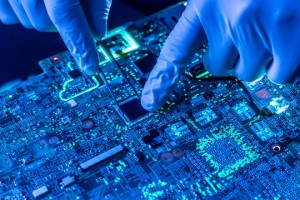Ensuring Reliability in Mission Critical Electronics
 When designing electronic products for mission critical applications, reliability and performance are paramount. Mission critical systems are those where failure could result in loss of life, severe damage, or major financial loss. Examples include aerospace systems, medical devices, industrial control systems, and military/ defence electronics. For these high-stakes applications, several key requirements must be followed during design and manufacturing.
When designing electronic products for mission critical applications, reliability and performance are paramount. Mission critical systems are those where failure could result in loss of life, severe damage, or major financial loss. Examples include aerospace systems, medical devices, industrial control systems, and military/ defence electronics. For these high-stakes applications, several key requirements must be followed during design and manufacturing.
- Rigorous Testing and Validation- Extensive testing and validation protocols are essential for mission critical electronics. This testing involves checking how they perform under tough conditions like extreme temperatures or high usage. It helps find any possible problems or weak points so that the electronics can be reliable when needed most.
- Redundancy and Fault Tolerance- Adding backup plans and extra safeguards is essential for important systems used in critical missions. This might mean having extra parts, backup systems, and safety measures in place to make sure that key functions keep working even if something goes wrong. We can also use special algorithms to quickly spot and fix problems to keep the system running smoothly.
- Thermal Management- Keeping mission critical electronics cool is really important. If they get too hot, the parts can break, the system might not work well, and it might stop working early. We use good cooling methods like special cooling systems, materials to help heat move away, and smart packaging to keep everything at the right temperature.
- Power Management and Battery Backup- Reliable power management and backup batteries are super important for important tasks. Things like backup power supplies, extra power sources, and smart power programs can keep things going even if the power goes out. Plus, for jobs far away or on the go, it’s important to use power wisely and make batteries last as long as possible.
- Ruggedization and Environmental Protection- Tough environments can harm important electronics. To keep them safe and working well, we use strong cases, special coatings, and shields to block things like extreme heat, shaking, wetness, and electrical interference.
- Cybersecurity and Tamper-Resistance- In today’s connected world, mission critical systems are vulnerable to cyber threats and malicious attacks. Implementing robust cybersecurity measures, such as encryption, authentication, and secure communication protocols, is essential to protect sensitive data and prevent unauthorized access or tampering.
By addressing these key requirements during the design phase, mission critical electronics can achieve the necessary levels of reliability, resilience, and performance required for their critical applications, minimizing the risk of failures and ensuring operational continuity.
Author- Moumita Ghosh









Leave a Reply